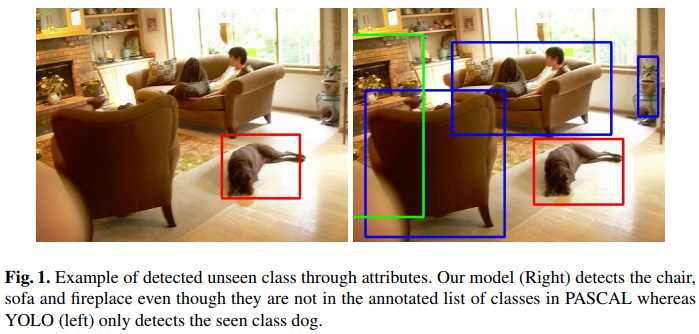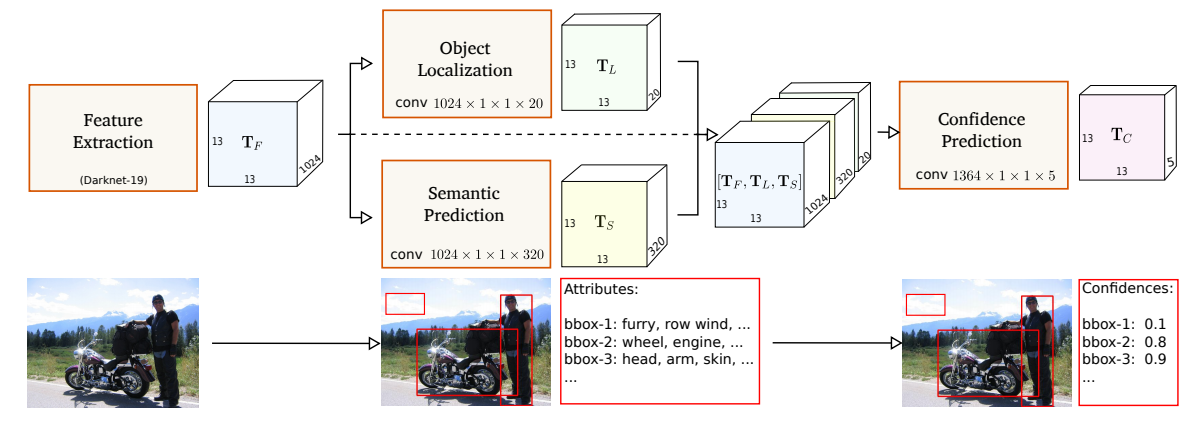This repository contains the datasets used in Zero Shot Detection by Pengkai Zhu, Hanxiao Wang, Tolga Bolukbasi and Venkatesh Saligrama. The pdf version is available here.
@article{zhu2018zero,
title={Zero-Shot Detection},
author={Zhu, Pengkai and Wang, Hanxiao and Bolukbasi, Tolga and Saligrama, Venkatesh},
journal={arXiv preprint arXiv:1803.07113},
year={2018}
}
We propose a new Zero-Shot Detection (ZSD) problem, referring to the task of detecting classes with zero training data.
To solve the ZSD problem, we propose a novel zero-shot method based on training an end-to-end model that fuses semantic attribute prediction with visual features to propose object bounding boxes for seen and unseen classes. Our method retains the efficiency and effectiveness of YOLO for objects seen during training, while improving its performance for novel and unseen objects.
The scripts can download Pascal VOC or MSCOCO and split it into four parts as in the paper:
- Train: seen in train
- Test-Seen: seen in val/test
- Test-Unseen: unseen in train&val&test
- Test-Mix: both seen & unseen in val/test
The dataset is split based on assigned seen categories names. We provide
the splits we used in the paper in seen_names subfolder.
The attributes for Pascal VOC will be downloaded and extracted automatically
when running get_voc_zsd_dataset.sh. We also provide the attributes we use
in the paper in the attributes subfolder:
coco_w2v.txt: w2v attributes for coco categoriescoco_w2v_voc.txt: projected w2v attributes for coco categories (mirroring VOC attributes similarity)voc.txt: labelled attributes (from aP&Y) for VOC categoriesvoc_w2v.txt: w2v attributes for VOC categories
- Preliminary:
numpy
bash get_voc_zsd_dataset.sh $zsd-data-dir # $zsd-data-dir: directory for saving pascal ZSD datasetThe dataset will be downloaded to $zsd-data-dir and the split sets will be saved
in 1010split subfolder by default. If you already downloaded the dataset or would like
to try some other splits, just run:
python zsd_split.py --dataset voc --data_dir $zsd-data-dir --name_file voc.names \
--seen_name_file seen_names/voc/${choose another split} \
--save_dir ${split save name} \bash get_coco_zsd_dataset.sh $zsd-data-dir # $zsd-data-dir: directory for saving coco ZSD dataset
